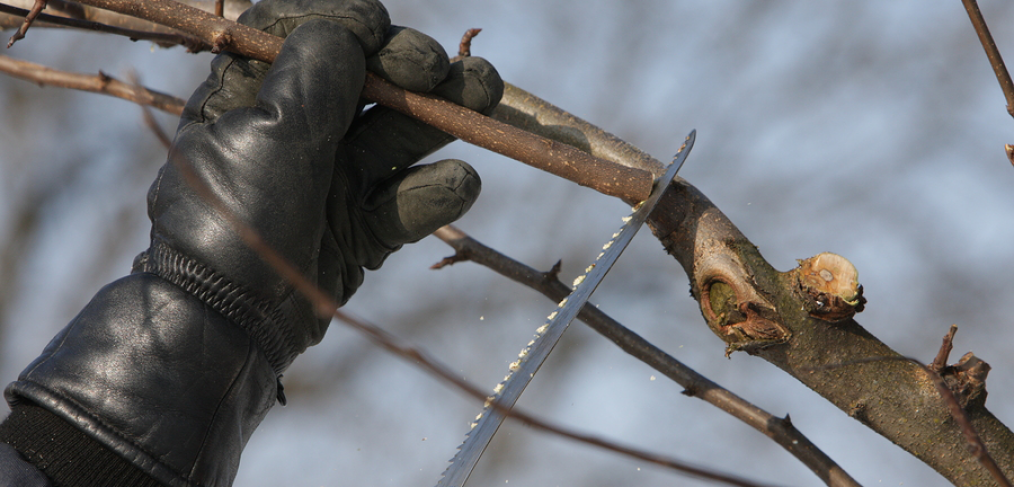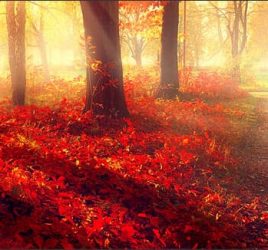
Tree Care: Why You Need to Avoid Tree Topping

We’ve all seen numerous examples of tree topping and crown reduction pruning in cities and suburbs. These examples include trees that are lopped off on one side or look like a huge gouge has been taken out of the top. Or trees with whole crowns having been cut down to stumps.
Cities do this to protect power lines and homeowners do this because they think it will make a large tree safer. Ironically, it can make a tree much more dangerous and should never be used as a primary pruning method.
Tree topping or heading is used to reduce the height or spread of a tree. Either the branches of the tree are cut down to stumps or the smaller lateral branches are cut.
This may reduce the size of the tree temporarily but it does nothing for the long-term size of the tree.
Disadvantages of Tree Topping
Here’s what happens when you top a tree or a shrub:
- The branch you’ve cut begins to wildly grow new sprouts. These sprouts are usually many more than the original branch that was there and they don’t grow in a nice, attractive, orderly fashion. They are disorganized. They destroy the tree’s natural growth. They’re long, spindly sprouts that grow straight up without the natural shape and variety of the tree’s unpruned form.
- Trees that have been topped are stressed. They react to this loss of food source by making those shoots grow quickly, and just as tall as the original growth. However, now the crown is denser and requires, even more, effort to prune.
- The stress sprouts will shade the tree’s interior branches, causing them to die.
- The sprouts are much more prone to breakage because they are weakly attached and crowded. You can see why topping can easily make a tree more dangerous.
You can’t always control where your big trees are planted. After all, if a tree is truly large, it has been there for a long time. Power lines may not have been around when your tree was planted. That having been said, don’t plant trees that will be large someday near or under utility lines, awnings, houses or anywhere else that will require them to be pruned too heavily in order to protect property.
If you have the chance to choose what tree to plant where, do your research just like you would do with any other garden plant. Trees are the first catchers-of-sunshine and long-lived, however, this doesn’t make them impervious to damage.
Crown Reduction Pruning
Crown reduction pruning is a safer alternative when pruning is necessary. This method is also called drop crotch pruning and is used when a tree has outgrown its permitted space.
This type of pruning keeps the tree’s natural shape and minimizes the stress done to the tree. It also increases the time between prunings.
Crown reduction pruning works by removing the end of a branch by cutting it back to a “crotch” created by a lateral branch. Arborists will make sure the side branch is at least ⅓ the diameter of the branch being cut in order to make the tree redirect water and nutrients into the lateral branch.
Then the lateral branch can be the primary grower, giving the tree the ability to feed itself. Trees pruned using this method will produce far fewer sprouts at the stumps or points of removal.
Of course, you can’t always choose the best time for the tree for pruning. Trees are generally resilient to abuse. They can absorb a certain amount of damage even if you prune in the wrong season.
That being said, the late dormant season is the best time – before the buds are expanding in the spring. If you’ve hit that time in spring, hold off until the leaves are at their largest. If you prune when the tree is budding, you will seriously disrupt its ability to feed itself and its natural life cycle.
Conifers should never be topped and pines should not be pruned in warm months. Pruning in warm months can create insect problems. The best time is dormant-season cold periods. Deciduous trees can also leak sap if you prune too late in the dormant season.
Ways to Keep Your Trees Healthy
Other ways to keep your trees healthy include:
- Do not use wound paints if you can avoid it. These are cosmetic only and don’t prevent decay. Trees heal their own wounds much more efficiently and need to be undisturbed in order to seal off their own wound sites. Black tar-like paints can keep wounds from closing and kill the tree’s living tissue. Latex or oil paints will do the same thing.
- Pruning wounds need to be left alone. Don’t cut or shape or try to sterilize them. You can damage the branch collar at the base of the pruned branch and cause your tree to have structural problems or biological problems.
- Minimize any mechanical damage to the trunk of your tree
- Be careful with the lawnmower.
- Don’t allow carvings in your trees with knives or hatchets.
- Never put nails or bolts in your trees – such as to hold up tree houses.
- Don’t park your car or allow heavy machinery near your trees.
Trees are not primarily damaged by insects. They are damaged by people. However, you can take action once you understand this and prevent your trees from unnecessary damage. This has the added benefit of keeping your trees and shrubs looking their best as well.
How to Prevent Mistreatment of Trees
In order to prevent the mistreatment of trees:
- Don’t plant maples in alkaline soils.
- Never plant trees in old alkaline building rubble.
- Don’t plant
- Maples or willows in dry soils.
- Pines in wet soils.
- Birch trees in shade.
- Dogwoods in open, unprotected areas.
- Learn what your trees need and don’t plant something you don’t plan to tend.
- Don’t plant a tree into a small hole or in compacted soil or add too much humus.
- Before you decide to plant, have your soil tested to see if it needs micro-element fertilizer or soil acidification. Fertilizers can’t be used as tree food. Trees get their food from the sun and turn it into sugar. However, you might need a good fertilizer to get a tree established in nutrient-filled soil. If trees can’t grow enough leaves or needles, they can’t make enough food to survive.
Take Away
Trees need our help just as much as any other plant. If you have a tree that is growing too big or is sick and you don’t know how to help it, call your county, state or a university for help. You can also try the United States Forest Service or a local arborist.
It takes special training to prune a tree so you don’t end up hurting or killing it. For the sake of this amazing plant, call in a professional and take good care of your trees.
Additionally, make certain your trees receive adequate water, oxygen, and nutrients to the root zone to help them thrive. The Pro-318 Deep Root System is a scientifically proven root watering system to accomplish this.

